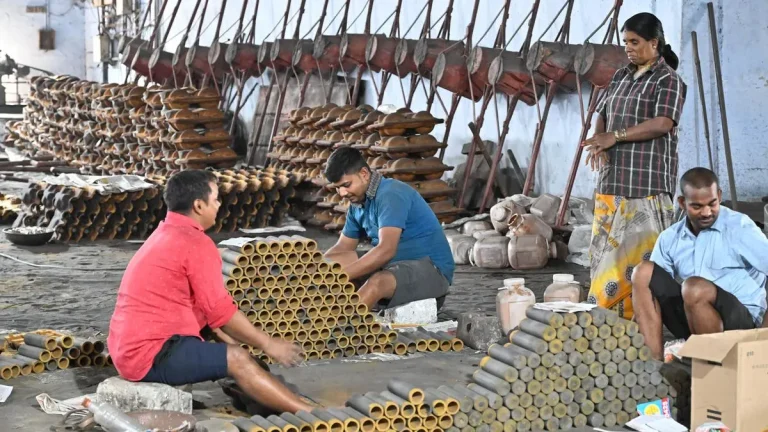India’s Dubious Claims of Declining Inequality: A Deep Dive into Misleading Metrics and Economic Realities
The Indian government has proudly proclaimed its economic policies as the driving force behind India’s ascent to the world’s fourth-largest economy, coupled with claims of achieving remarkable strides in equitable wealth distribution. Citing a decline in the Gini coefficient, a measure of income inequality, from 28.8 in 2011-12 to 25.5 in 2022-23, based on World Bank data, the government posits India as a global leader in equality, trailing only Slovakia, Slovenia, and Belarus. However, a closer examination reveals a carefully constructed narrative built upon flawed methodologies and selective data interpretation, obscuring a starkly different reality of widening income disparities and economic distress.
The crux of the government’s fallacy lies in its deliberate conflation of consumption inequality with income inequality. The cited decline in the Gini coefficient is based on the Household Consumption Expenditure Survey (HCES) 2022-23, which measures consumption patterns, not income. This sleight of hand allows the government to present a rosy picture of decreasing inequality while conveniently ignoring the more accurate, and less flattering, picture painted by income-based metrics. Further compounding this misrepresentation, the government sidesteps crucial caveats present in the very World Bank report it selectively references. These caveats acknowledge data limitations stemming from methodological changes in the 2022-23 HCES, rendering comparisons with the 2011-12 survey inaccurate. Furthermore, the report highlights the actual trend of rising income inequality, contradicting the government’s core assertion. This manipulation allows the government to paint a misleading picture of equitable growth.
Contrary to the narrative of declining inequality, data from various sources reveals a consistent trend of widening income disparities. The Gini coefficient for income has actually climbed from 52 in 2004 to 62 in 2023, indicating a significant increase in income inequality. This trend is further corroborated by wage disparities, with the top 10% earning a median income 13 times higher than the bottom 10% in 2023-24. The government’s attempt to compare India’s consumption inequality with income inequality figures of other countries is not only statistically flawed but also deliberately misleading, further distorting the true economic landscape.
While rising income inequality in rapidly developing economies can be justifiable if driven by productivity gains and technological advancements benefiting a broader population, India’s case presents a more concerning picture. The observed increase in inequality is coupled with stagnant or even declining real incomes for a significant portion of the population. This combination erodes labour productivity, discourages active participation in the workforce, and fosters dependence on government handouts, which provide only a temporary safety net without addressing the underlying issue of shrinking real incomes. This trend aligns with observations of a shrinking middle class in India, further highlighting the detrimental impact of the widening income gap.
The government’s narrative of robust economic growth, fuelled by a touted 6.5% real GDP growth in 2024-25, is challenged by emerging economic trends. The official narrative attributes this growth to strong domestic demand and sound economic policies, while also crediting welfare measures like free food distribution and direct benefit transfers for the supposed decline in inequality. However, a deeper look reveals a less optimistic reality. Even the flawed HCES data shows real per capita consumption expenditure growth far below the reported GDP growth rate, indicating a less-than-ideal household economic situation. Moreover, multiple sources, including RBI’s KLEMS data and the Periodic Labour Force Survey (PLFS), confirm declining real incomes across a large segment of the population. These findings expose the disconnect between the government’s narrative and the actual economic experiences of a significant portion of the Indian population.
The divergence between economic performance and the government’s rhetoric becomes even more pronounced when examining income tax data, which primarily captures formal sector earners. This data reveals muted post-pandemic income growth barely keeping pace with inflation, coupled with a rise in inequality among salaried workers to a decade high. The benefits of economic growth appear concentrated in specific sectors like services exports and BFSI, while manufacturing and other services lag, further exacerbating income disparities. Moreover, the government’s narrative ignores the concerning trend of structural backsliding, characterized by increasing ruralization, a decline in quality jobs, and reduced migration, all of which contribute to a less dynamic and inclusive economy.
The Indian economy appears to be following a K-shaped recovery trajectory, where affluent households reap the benefits of productivity gains and a buoyant equity market, while lower-income households grapple with persistent budget constraints, leading to downtrading and spending cuts across various consumer goods. This polarization underscores the uneven distribution of economic gains and highlights the inadequacy of current policies to address the growing chasm between the rich and the poor. The shift in government policies away from supply-side strategies, which have failed to stimulate private capital expenditure and generate productive employment, further compounds the economic challenges faced by lower-income households.
In conclusion, the Indian government’s claims of decreasing inequality are not only misleading but also a deliberate misrepresentation of the country’s economic realities. By selectively presenting data and conflating consumption with income inequality, the government constructs a narrative that masks the stark reality of widening income disparities, stagnant real incomes, and growing economic hardship for a significant portion of the population. This distorted narrative undermines the credibility of claims regarding poverty reduction, as declining real incomes and rising inequality make meaningful poverty alleviation extremely unlikely. The government’s attempt to showcase economic success, echoed by the World Bank’s incomplete and nuanced analysis, obscures the urgent need for policy interventions that address the structural issues underpinning India’s growing inequality crisis.


